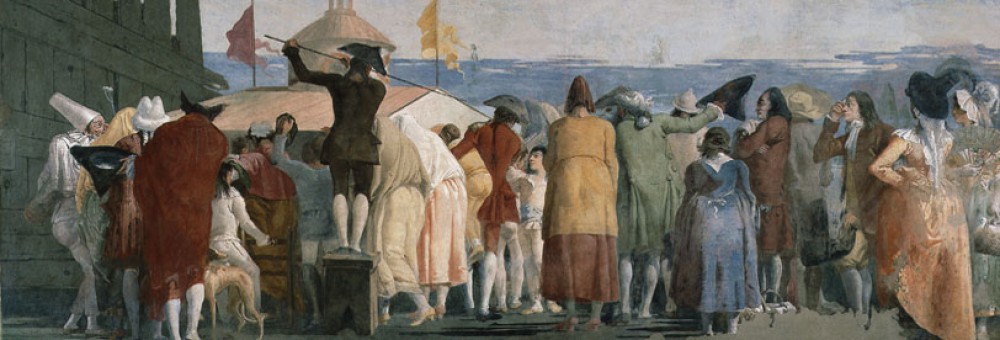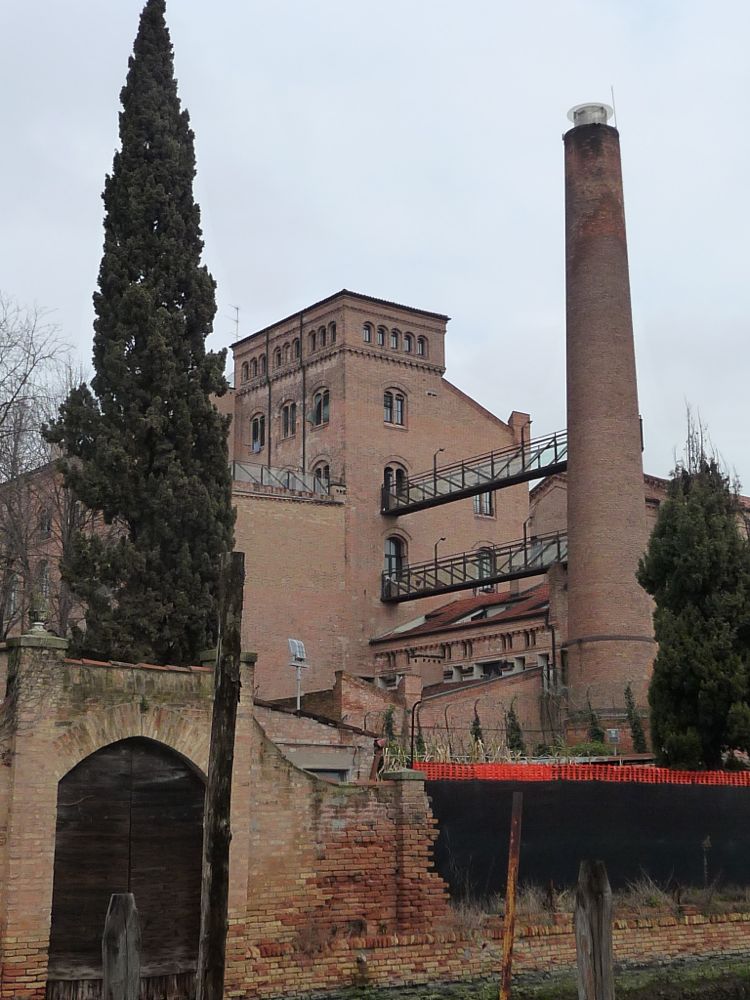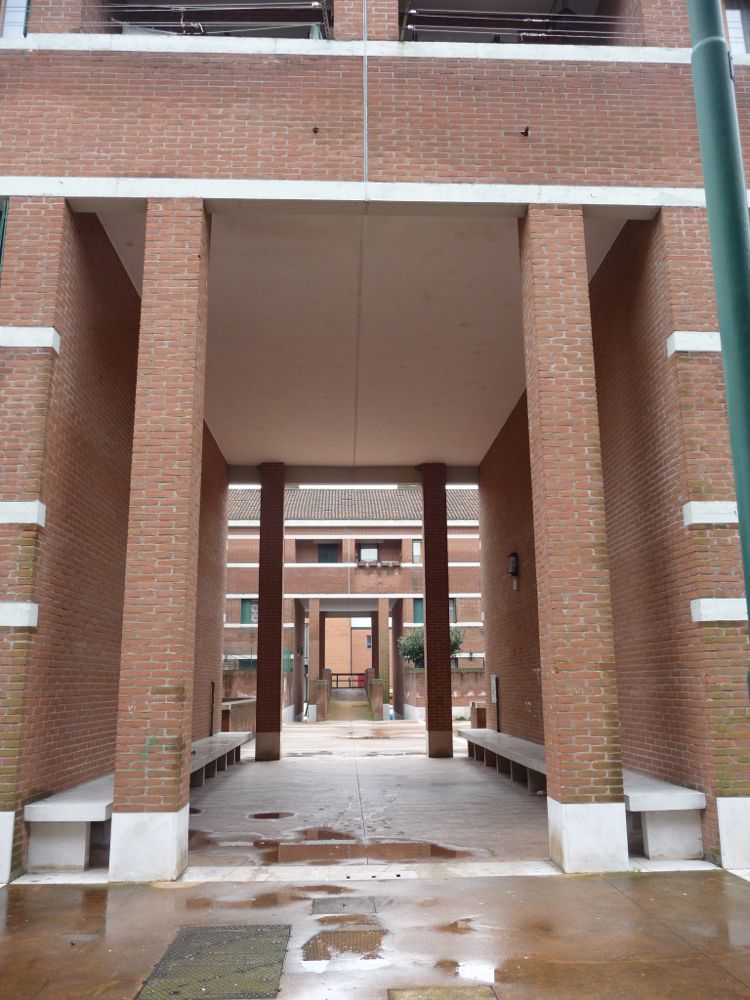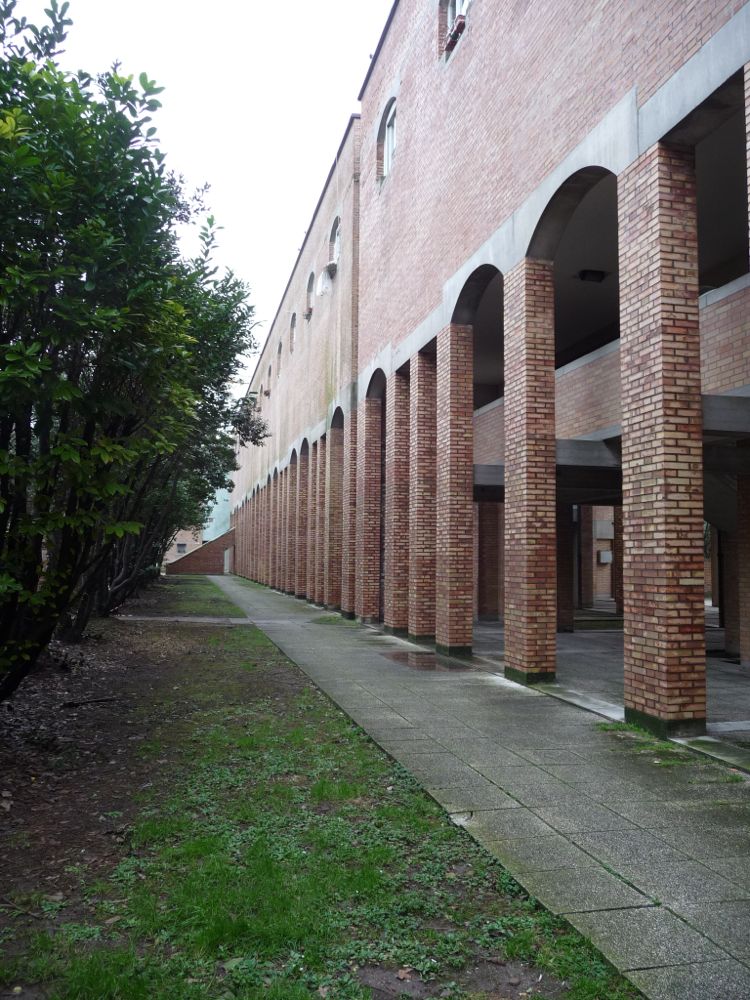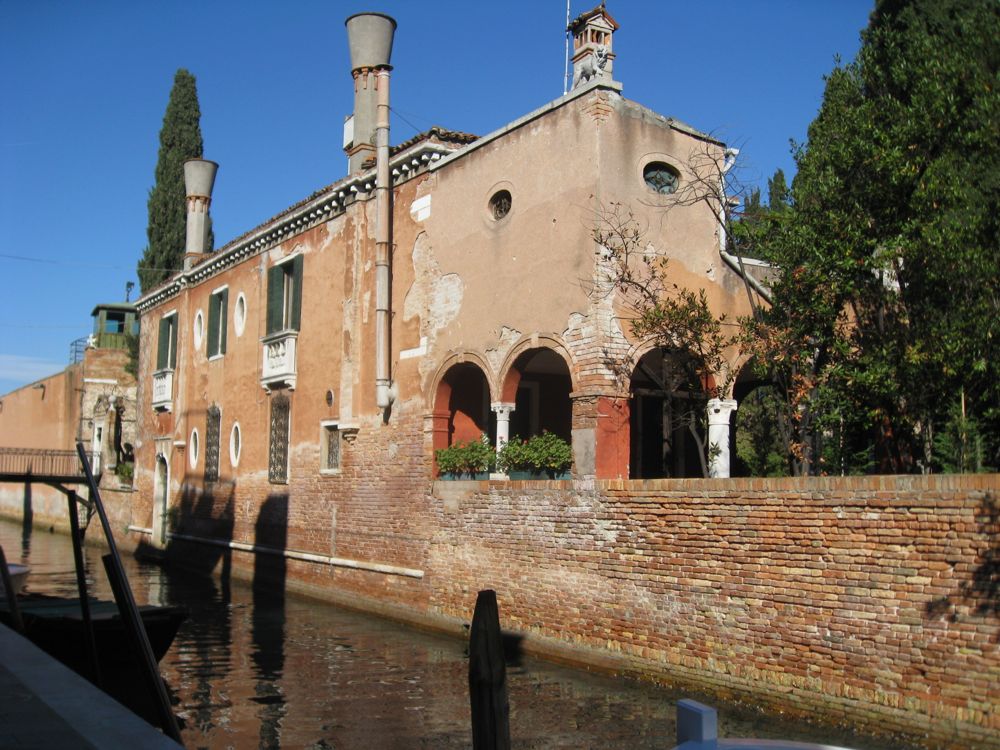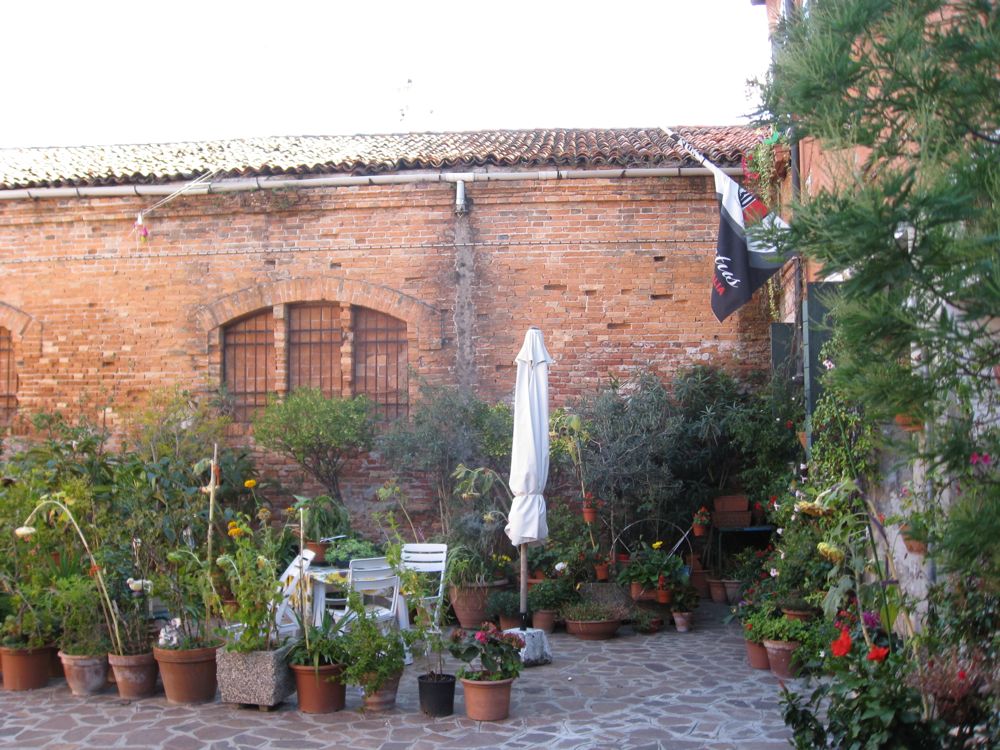Deutsche Version am Ende
People often think that Venice is a city where history has stopped with the fall of the Republic; a city that has not been touched by modernity.
On the contrary, throughout the 19th and 20th century, there have been intensive discussions on new urban plans that would help to develop the economy; thousands of buildings were pulled down and reconstructed in new forms.
In particular, the Giudecca island, where in the past there were many orchards, gardens, and monasteries and was not as densely populated as Venice, was the place where the major industrial changes occurred.
Breweries, shipyards, chemical factories, the Junghans watch factory, and the huge Mulino Stucky (a former mill) changed the physiognomy of the island.
In the 20th century, the local administration pursued the development of residential areas; this brought to the realization of anonymous building projects as well as of architectural projects conceived to fit into the existing urban context.
A walk on the Giudecca reveals all these layers: the traditional architecture, the industrial transformations of the 19th century and how famous modern architects, including Aldo Rossi, Alvaro Siza, Gino Valle, and Cino Zucchi, transformed former industrial areas into contemporary buildings that nevertheless remain in synergy with the island’s traditional architecture.
If you’d like to take this walk with me, please contact me!
Cristina, www.slow-venice.com
Zusammenfassung auf deutsch
Während des gesamten 19. und 20. Jahrhunderts gab es in Venedig intensive Diskussionen über neue Stadtpläne, die zur Entwicklung der Wirtschaft beitragen würden. Tausende von Gebäuden wurden abgerissen und in neuen Formen rekonstruiert. Insbesondere die Insel Giudecca, auf der es in der Vergangenheit viele Obstgärten, Gärten und Klöster gab und die nicht so dicht besiedelt war wie Venedig, war der Ort, an dem die großen industriellen Veränderungen stattfanden. Ein Spaziergang auf der Giudecca zeigt all diese Schichten: die traditionelle Architektur, die industriellen Veränderungen des 19. Jahrhunderts und wie berühmte moderne Architekten wie Aldo Rossi, Alvaro Siza, Gino Valle und Cino Zucchi ehemalige Industriegebiete in zeitgenössische Gebäude verwandelten, die dennoch erhalten bleiben in Synergie mit der traditionellen Architektur der Insel.
Möchten Sie diese Führung bei mir buchen, senden Sie mir bitte eine Mail:
cristina@slow-venice.com
